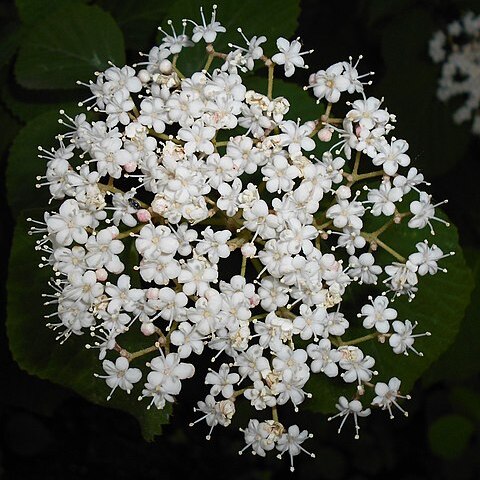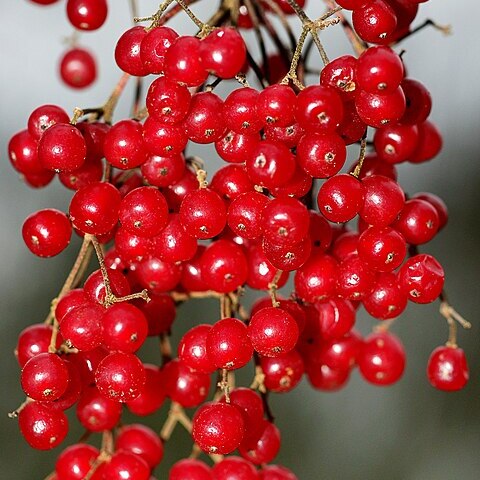Shrubs or small trees, deciduous, to 5(-7) m tall. Bark light brown. Branchlets of current year purple-brownish, glabrous or yellow-brownish stellate-pubescent; branchlets of previous year purple-brown or black-brown, terete, glabrous, with dispersed, small, rounded lenticels. Winter buds ovoid-oblong, with 2 pairs of separate scales; scales ± hairy outside. Leaves always opposite, not clustered at apices of branchlets; stipules 2, persistent, subulate, small; petiole green, slender, 1-2(-3.5) cm, sparsely long hairy or glabrous; leaf blade green when young, broadly ovate to rhombic-ovate or broadly obovate, rarely elliptic-oblong, 3.5-8.5(-12) × 3-5.5(-9) cm, thickly papery or slightly leathery, abaxially pubescent on midvein and lateral veins and stellate-pubescent in vein axils, or stellate-pubescent throughout, with or without glandular dots, adaxially glabrous or pubescent on midvein, midvein raised abaxially, lateral veins (4 or)5 or 6(or 7)-jugate, pinnate, straight or slightly arched, branched, ending in teeth, conspicuously raised abaxially, impressed adaxially, veinlets transverse, slightly raised abaxially, impressed adaxially, not lobed, base broadly cuneate to rounded, rarely truncate, with 0-3 circular glands on both sides of midvein near base, margin crenate above 1/3-1/2 from base, apex abruptly and shortly acuminate to acuminate. Flowers appearing after leaves; inflorescence a compound umbel-like cyme, terminal or at apices of lateral short branchlets with 1 pair of leaves, 5-12 cm in diam.; rays whorled; first node of inflorescence usually with 7 rays, dense, usually densely or sparsely yellow-brown stellate-pubescent, without large sterile radiant flowers; peduncles usually less than 1 cm; bracts and bracteoles deciduous, leaflike, green, lanceolate, sparsely hairy. Flowers on rays from 3rd to 5th orders, not fragrant, shortly pedicellate or sessile. Calyx green; tube tubular-obconical, ca. 1.5 mm, with yellow-brown glandular dots and sparsely or densely stellate-pubescent; lobes broadly ovate-triangular, ca. 1.5 mm, ciliate, apex obtuse. Corolla white, rotate, ca. 4 mm in diam., glabrous or stellate-pubescent; tube 1-2 mm; lobes spreading, orbicular-ovate, exceeding tube, apex rounded, margin entire. Stamens usually exceeding corolla, inserted at base of corolla; filaments 4-5 mm; anthers yellow-whitish, broadly elliptic, ca. 1 mm. Styles exceeding calyx lobes; stigmas capitate. Fruit maturing red, subglobose, ca. 6 mm, base rounded, apex rounded, glabrous; pyrenes compressed, ovoid, 3.5-5 × 3-4 mm, with 2 deep dorsal grooves, and 1-3 ventral grooves, apex acute. Fl. Jun-Jul, fr. Sep-Oct. 2n = 18*, 20*, 22*.
More
A shrub or small tree. It loses its leaves during the year. It grows 5 m tall. The bark is light brown. The leaves are opposite and oval and 4-9 cm long by 3-6 cm wide. They are hairy on the mid vein underneath. The flowers are in a flat topped group at the ends of the branches. They are white.



